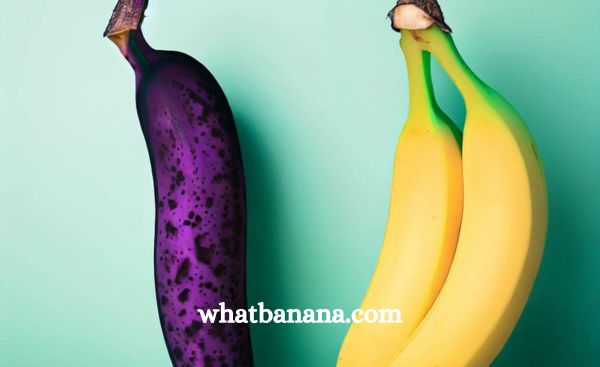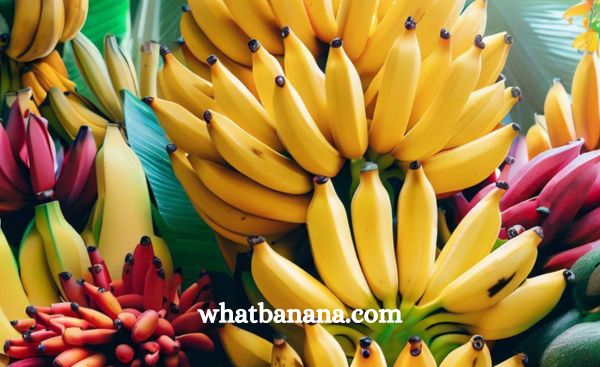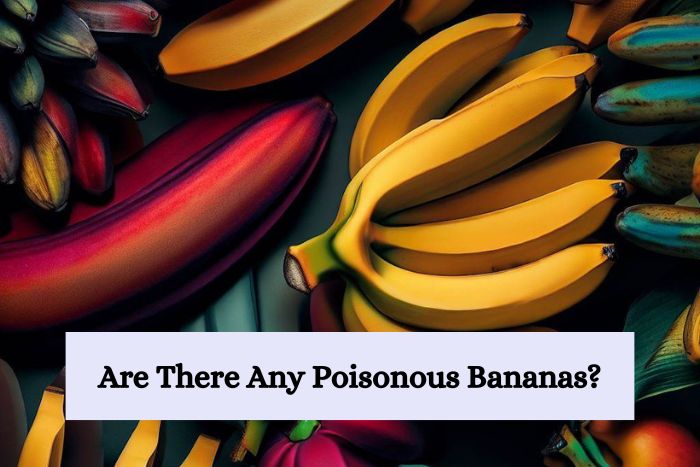Hey there, fellow foodies!
🍌 Are you as obsessed with bananas as I am?
They’re the perfect grab-and-go snack, great in smoothies, and add a delightful sweetness to countless recipes.
But wait, have you ever wondered if there are any poisonous bananas lurking in your fruit bowl?
🤔 Well, fear not, because I’m here to put your mind at ease.
In this article, we’ll dive deep into the world of bananas, exploring their origins, and different varieties, and, most importantly, addressing the burning question: are there any poisonous bananas?
So, grab a seat, let’s debunk some myths, and indulge in our banana love affair! 🍌❤️
🍌 5 Key Points About Global Banana Consumption 🍌 |
|
|---|---|
| 1. Top Consumer | The United States is the top consumer of bananas worldwide. |
| 2. Health Impact | Bananas are a major source of vitamins, especially potassium and vitamin C, globally. |
| 3. Production Volume | Over 150 million tonnes of bananas are produced annually worldwide. |
| 4. Top Producer | India is the world’s largest banana producer, accounting for about 25% of the global output. |
| 5. Environmental Impact | Banana cultivation has significant impacts on the environment due to pesticide use and deforestation. |
| Brought to You by whatbanana.com 🍌 | |
Banana Myths Busted: Are Any Bananas Poisonous?
There are no poisonous bananas. All commercially available bananas are safe for consumption. Varieties like the Manzano banana, often rumored to be poisonous, are perfectly fine to eat. Bananas offer a range of flavors and textures, and their ripeness determines their sweetness. With their vibrant yellow color, pleasant aroma, and soft texture, bananas make a healthy and delicious snack.
Are There Any Poisonous Bananas in Existence?
So, let’s get a straight answer to the question about this popular fruit!
And I can reassure you immediately!
There are no bananas in existence that are poisonous.
That makes me happy, and I guess you are too!
Whether you get your bananas from the market or your local grocery store, they are perfectly safe to eat.
You won’t get any nasty surprises after eating your favorite yellow fruit!
But why do people ask about poisonous bananas?
What started this rumor or myth?
It’s down to the Manzano banana, also known as the “apple banana.”
Now, admittedly, it looks and tastes different from your regular banana.
It has a stronger flavor and a firmer texture, but it’s still safe to eat.
In fact, in many Latin American countries, it is the preferred option.
The Manzano banana is used for both sweet and savory dishes.
So, really, the only thing you need to be concerned about is whether the banana is ripe enough to eat.
There’s no poison beneath that lovely yellow peel!

What Are the Origins of Bananas and Their Different Varieties?
Perhaps you are unaware that there are many different varieties of bananas.
If people see an unfamiliar type of banana, that could be where the confusion lies, leading to the question of whether it could be poisonous.
Bananas are thought to have originated in Southeast Asia, particularly Indonesia and Malaysia.
Through the use of trade routes, exploration, and discovery, the plants spread across the world.
Quite fascinating, really, as to how it has now become a staple food in many countries!
You are probably most familiar with the Cavendish variety; that’s the one we see in our stores.
It’s the classic yellow fruit, but there are certainly lots of other bananas too.
And thankfully, none of them are poisonous, so feel free to try any new ones that you see!
You may come across a smaller banana, known as Lady Finger, which is much sweeter.
And there are even red and blue bananas!
Surprisingly, blue bananas are a natural phenomenon.
The only banana to be wary of is the plantain, which, although not poisonous, is not pleasurable when eaten raw and needs to be cooked.
So, feel free to broaden your banana horizons and explore new varieties and flavors!

How Do I Know If a Banana is Safe to Eat?
Now that we know that bananas are not poisonous, does that mean they are always safe to eat?
In general, most bananas can be safely eaten, but there are stages in their development that mean they might not taste as good as expected.
Start by looking at the peel.
Ideally, it should be a vibrant yellow, which means it is ripe and ready to eat.
If it has green skin, it is not ripe yet and hasn’t developed the familiar sweetness that we know and love!
On the other hand, if the banana peel is brown or has dark spots, then it’s gone too far; it is overripe.
At this stage, the banana is better for cooking or adding to smoothies.
Squeezing the banana can also give you an indication of whether it’s ready to eat.
If it is too firm, it is unlikely to be sweet, whereas being too soft and squishy means it has gone past its prime.
If in doubt, always trust your nose!
A perfectly ripe banana should smell sweet and not be overly fermented.
Are You Eating Dangerous GMO Bananas?
Key Takeaways
- Bananas are not poisonous; all commercially available bananas are safe to eat.
- The Manzano banana, often mistaken as poisonous, is actually a delicious and safe variety enjoyed in many countries.
- To ensure a banana is safe to eat, look for a vibrant yellow color, a slightly soft texture, and a pleasant aroma.
- Bananas come in various flavors and textures, offering options like the creamy Lady Finger banana or the starchy Plantain banana.
- Bananas are a healthy and versatile snack, perfect for a quick energy boost, baking, or adding to smoothies.
Banish your fears about poisonous bananas!
Enjoy a wide variety of delicious and safe bananas with confidence.
Ready to explore the world of bananas?
Which variety will you try next? 🍌
